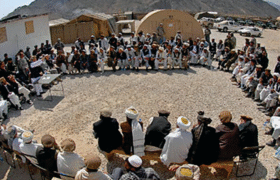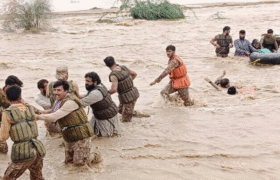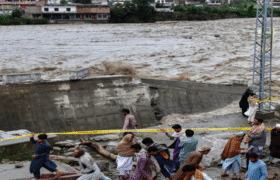Shahzad Masood Roomi
Once known for guerrilla warfare and suicide bombings, the Tehreek-e-Taliban Pakistan, a.k.a Fitna-Al-Khawarij (FAK), has now embraced the modern tactic of using commercially available quadcopters, equipped with improvised explosive devices (IEDs), against security forces in Khyber Pakhtunkhwa (KP). A series of such attacks have been reported in KP’s southern districts, particularly in Bannu and adjacent merged areas. So far, at least eight such incidents have been confirmed over the past two-and-a-half months, including an attack on a police station in Bannu that resulted in the death of a woman and injuries to three children. Despite inaccuracies in many of these strikes, these incidents represent a dangerous escalation, given the lack of necessary detection and countering drone capabilities of the local police force, such as anti‑drone sensors or jammers. Provincial police chief Zulfiqar Hameed’s admission that “the militants are better equipped than we are” underscores the widening technological disparity between police and the terrorists.
On May 19, 2025, a drone strike in Hurmuz village of Tehsil Mir Ali in North Waziristan, carried out by TTP, resulted in the killing of four children, provoked protests and sit-in demonstrations demanding accountability and an independent investigation. This is yet another ugly facet of this TTP strategy. Kill innocents, blame the Pakistan Army and get more recruitments after showing sympathy to the affected families. Security forces officially denied any involvement in the Hurmuz incidents and clarified that it was an act of terrorism by the FAK, yet some locals demanded clarity and justice amid escalating anger. In a separate incident in March 2025, a TTP drone strike in Katlang Tehsil of Mardan district killed nine members of a sheepherder family. The incident triggered provincial government inquiries and compensation pledges, despite security forces’ clarification that no drones were used by them. The announcement of compensation was exploited by TTP recruiters. This incident showcases the added complexities that TTP evolving drone tactics have introduced into ongoing counterterrorism and counterinsurgency operations. It underscores the urgent need for new civil-military coordination mechanisms to effectively respond to these emerging threats.
Groups like the Hafiz Gul Bahadur and Lashkar-e-Islam are believed to have been testing DJI quadcopters equipped with 400–700 g IEDs since early 2024. Analysts note that this new drone-based approach represents not only tactical adaptation but also cross-conflict learning mirroring developments in Afghanistan, Iraq, Syria, and among Afghan Taliban and ISIL affiliates. Such weapons provide the ability to strike from above without direct engagement, creating a force multiplier for non‑state groups.
Drones are not only used for direct attacks. Drones enable TTP to get real-time tracking of security forces’ movements. Now, it is an alarming fact that in KP, nearly 98% of TTP attacks in early 2025 were concentrated in KP’s tribal and southern districts, where drone activities were reported constantly. This aerial capability dramatically complicates counterterrorism strategies. In February and March 2025 alone, the TTP carried out 147 attacks in Pakistan, resulting in the deaths of 85 civilians and security personnel, with police among the most targeted groups.
The same period witnessed the deadliest monthly toll of militant strikes since 2014, with 228 fatalities recorded in March alone, including 73 security personnel. These grim statistics underscore how the emergence of airborne threats further strained the already overburdened police and frontier forces, which continue to operate without dedicated air defense infrastructure or sufficient interagency coordination. Drones in TTP’s hands carried potentially grave consequences, posing strategic, operational and psychological challenges.
- Strategic surprise: Drones enable TTP to bypass perimeter defenses and hit some important installation or convoys carrying VIPs.
- Psychological warfare: Unseen but lethal drones can create chronic fear forcing fatigue among police and civilians alike, eroding morale and public confidence.
- Civilian endangerment: As has been discussed earlier, TTP is using drones against KP civilians to get fresh recruitments and local support against security forces.
- Operational fragmentation: Security coordination becomes more complex when aerial threats intersect with military drone campaigns and joint counterinsurgency operations.
Countering this threat requires immediate multi-pronged measures. First, police outposts in vulnerable districts must be equipped with drone detection systems, jammers, or interception tools, and officers trained as drone spotters. Second, counter‑drone protocols and real‑time intelligence sharing must be established between civilian police and military air assets to ensure unified airspace control. Third, regulatory frameworks must restrict legal drone acquisition or flight in high-risk areas, with enforcement against unauthorized operators. Additionally, public awareness campaigns should educate civilians about drone warning signs, safe evacuation, and prompt reporting. Finally, intelligence cooperation with Afghan authorities and international partners is vital to trace supply lines of drone hardware and explosives, and disrupt training networks supporting militant drone deployment.





